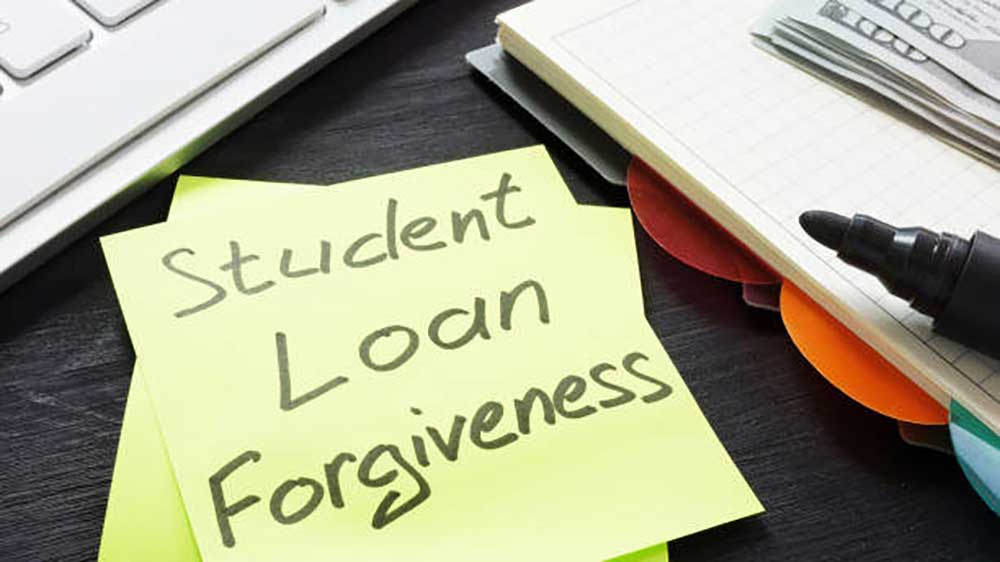By D. Kevin McNeir
Will Biden Administration’s Promise to Provide 804,000 Borrowers with $39 Billion in Automatic Loan Forgiveness Be Met with Further Challenges?
Tens of thousands of borrowers with federal student loans have been wondering for many long and agonizing months when their debt load would get a little lighter, given President Joe Biden’s campaign promise to cancel $50,000 in student debt.
But with the numerous challenges to and anger over Biden’s continued efforts to reduce, if not cancel student debt, it appears doubtful that many borrowers, especially Blacks who are disproportionately burdened, will ever be provided a path toward a more secure state of financial stability and economic mobility.
The fact remains that for Black borrowers who are disproportionately burdened by today’s student debt crisis, making inroads into the longstanding racial wealth gap in America appears to be more of a pipedream than reality.
In 2020, the Trump Administration suspended payments on federal student loans amid the COVID pandemic, allowing a reprieve for thousands of adults, many married and with children, and struggling to juggle the bills that came with tuition for their offspring, car notes, rent and health care.
Meanwhile, the numbers related to student loan debt in the U.S., race notwithstanding, were staggering. And they’ve only gotten worse.
Americans, in total, owe nearly $1.75 billion in student loan debt with more than 44 million people owing, according to a 2020 NAACP report.
Among 2016 graduates, nearly 40% of Black students left college with $30,000 or more in debt, compared with 29% of white students, 23% percent of Hispanic students and 18% of Asian students. Additionally, 86% of all Black students graduated that same year with debt of any amount, compared to 70% of white students, 67% of Hispanic students and 59% of Asian students.
Ironically, while it has since become the norm that students must take on debt for college, generations ago, they benefited from broad public investment in higher education. Of course, not all students benefited equally as Black students had little access to GI Bill benefits.
Even decades after Brown v. Board of Education (1954), predominately white institutions in many states were resistant to integration and the equal treatment of Blacks. At the same time, the federal government continued to inadequately and inequitably fund historically Black colleges and universities despite the high-quality opportunities they provided and the essential function they served for Black students and communities.
Then, Congress and President Lyndon B. Johnson passed the Higher Education Act of 1965, hoping to open doors of opportunity to everyone, especially Blacks and other students of color, through Pell Grants and other subsidies. However, by the end of the 20th century, just as students of color and women gained entry after decades of legal battles and social unrest, policymakers shifted the significant costs of higher education from the public to individual families. Higher education, formerly deemed a public good when it was predominantly for white men, became a public burden, shifting on the backs of families.
As one writer for the ACLU wrote in a provocative essay, “the student debt crisis is just one of the latest iterations in the long and shameful history of too many unkept promises to Black and brown communities. This country didn’t keep its promise to give formerly enslaved people the land that they worked on to build wealth following the Civil War. Then from redlining, inaccessible GI benefits, and now the decreased value of college degrees, Black people have continuously had the roads to economic success blocked outright.”
Recently, on July 14, the Department of Education (Department) began notifying more than 804,000 borrowers that they have a total of $39 billion in Federal student loans that will be automatically discharged in the coming weeks. In total, the Biden-Harris Administration has approved more than $116.6 billion in student loan forgiveness for more than 3.4 million borrowers. More than 800,000 borrowers would have their remaining loan balances erased, a total of $39 billion, as part of a program to address past errors made by loan servicers who failed to give payment credit where it was due — or who may have provided poor advice when borrowers called for assistance.
In the coming days and months, thousands of borrowers will learn whether they received an account adjustment resulting in enough qualifying payments to eliminate their loans — a process that will continue until the end of the year. After that, borrowers who don’t yet have enough qualifying payments for cancellation will receive their updated payment counts.
But how Black borrowers will fare, is anyone’s guess.
Then again, perhaps the outcome will be business as usual.


